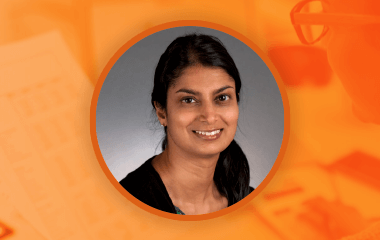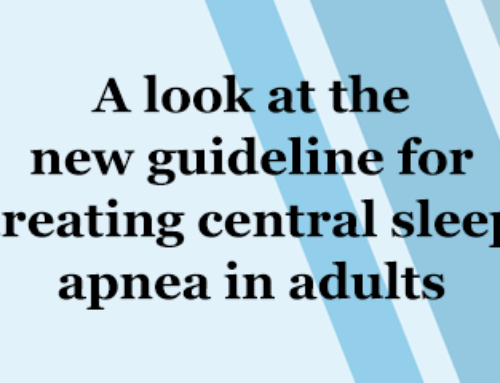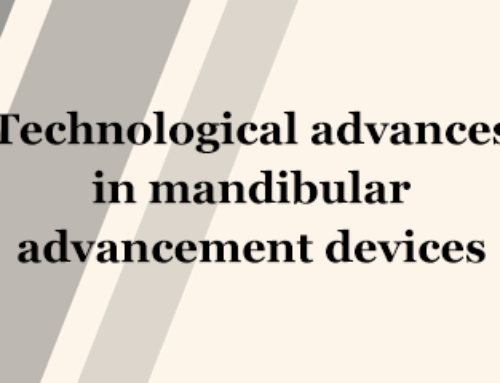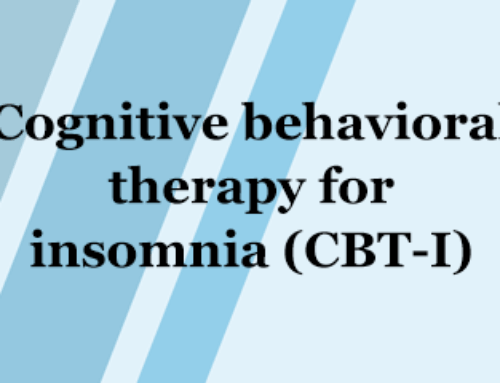By Kiran Maski, MD
The onset of central disorders of hypersomnolence, such as narcolepsy and idiopathic hypersomnia (IH), often occurs before age 18 years. Early diagnosis is critical for children and adolescents because untreated symptoms can affect their academic potential, long-term job opportunities, social functioning, self-identity and safety.1-3 It is essential to adhere to best practices and standardized sleep study protocols designed for children and adolescents to ensure uniformity in sleep laboratory procedures and consistency in diagnoses. In response to this need, the American Academy of Sleep Medicine (AASM) convened a task force comprising experts in pediatric sleep disorders. The objective was to update previously published 2012 Multiple Sleep Latency Test (MSLT)/Maintenance of Wakefulness Test (MWT) practice parameters for children4 and adapt 2021 MSLT/MWT recommended protocols for adults to children.5 Through a comprehensive review of existing literature and leveraging expert consensus, this pediatric task force formulated the 2023 Recommended Protocols for the Multiple Sleep Latency Test and Maintenance of Wakefulness Test in Children: Guidance from the American Academy of Sleep Medicine, published in the December 2023 issue of Journal of Clinical Sleep Medicine.6 As there were little data to make age-appropriate recommendations for MWT testing, the 2023 pediatric recommended protocols are focused on PSG-MSLT testing applicable to children older than five years. A few of the 2023 pediatric recommendations are highlighted below.
Notable modifications from adult recommendations pertain to accommodating age-appropriate sleep needs and timings when testing patients less than 18 years old. Using the adult six-hour minimum of total sleep time on polysomnogram before MSLT5 promotes insufficient sleep and may induce daytime sleepiness in the pediatric population. First, the new 2023 guidance recommends that the overnight polysomnogram (PSG) be scheduled to accommodate the patient’s age-appropriate sleep needs.7 This may require adjusting sleep technologist schedules and the availability of the sleep laboratory to implement recommended testing procedures for pediatric studies. At a minimum, patients less than 18 years old should have at least eight hours time in bed and seven hours of sleep per night before MSLT testing. Age-appropriate sleep duration and wake-sleep schedules should be documented for two weeks before ordering the PSG-MSLT or MWT testing by sleep diary and, ideally, by actigraphy. Counseling to correct sleep problems should be addressed before testing, but such habitual sleep data are critical for study interpretation, regardless. Both delayed sleep-wake phase disorder (common to adolescents) and insufficient sleep can cause daytime sleep onset REM periods and promote false positive diagnoses of narcolepsy8,9 if not accounted for. Next, 2023 pediatric recommended protocols recognize the importance of identifying a nocturnal sleep onset REM period on the PSG to diagnose narcolepsy type 1, a diagnostic biomarker now included in the International Classification of Sleep Disorders, Third Edition, Text Revision.10 To this end, it is recommended that PSG setup occur at least 30 minutes before habitual bedtime (with electronics such as cell phones not permitted for use after lights-off) to allow the emergence of a nocturnal REM sleep period. Finally, documentation of history (habitual sleep timing and duration, medication use, etc.) in the patient PSG-MSLT report is necessary to interpret study findings accurately.
The 2023 pediatric recommended protocols also promote the use of clinical judgment to guide whether treatment for sleep-disordered breathing is needed before MSLT testing. Severe daytime sleepiness rarely occurs with mild sleep-disordered breathing,11,12 and at the same time, narcolepsy is commonly co-morbid with OSA.13 Given the pediatric AHI threshold for OSA is low at 1/hour,10 the task force recognized that requiring treatments such as adenoidectomy or CPAP for mild OSA could pose potential for diagnostic delays for pediatric narcolepsy. Additionally, the 2023 pediatric recommended protocols emphasize the importance of shared decision-making with caregivers/parents and patients to prepare for PSG-MSLT testing and provide clear and informed instructions for testing. For example, young children may become anxious if forced to sleep separately from a parent during MSLT testing and thus be unable to fall asleep as expected. Determining patient needs and planning accordingly to allow a parent/caregiver in the room during MSLT testing could be helpful. Finally, the 2023 pediatric recommended protocols further detail suggestions for conducting MSLTs in special populations such as those with Prader-Willi syndrome and children with neurodevelopmental delays. Overall, the holistic approach promoted in these recommendations enhances patient well-being and facilitates diagnostic strategies tailored to pediatric populations.
Professionals involved in diagnosing and caring for pediatric sleep disorders are strongly encouraged to review the full publication of the 2023 pediatric recommended protocols.6 These recommendations seek to enhance diagnostic accuracy, improve patient outcomes, and advance our understanding of pediatric sleep disorders by addressing the unique developmental and clinical considerations inherent to younger populations.
Kiran Maski, MD, is an assistant professor of neurology at Harvard Medical School and child neurologist and sleep medicine specialist at Boston Children’s Hospital, where she is the director of the Neurology Sleep Clinic.
This article appeared in volume nine, issue two of Montage magazine.
References
- Rocca FL, Finotti E, Pizza F, Ingravallo F, Gatta M, Bruni O, Plazzi G. Psychosocial Profile and Quality of Life in Children With Type 1 Narcolepsy: A Case-Control Study. Sleep. 2016;39(7):1389-98.
- Inocente CO, Gustin MP, Lavault S, Guignard-Perret A, Raoux A, Christol N, et al. Quality of life in children with narcolepsy. CNS Neurosci Ther. 2014;20(8):763-71.
- Avis KT, Gamble KL, Schwebel DC. Does excessive daytime sleepiness affect children’s pedestrian safety? Sleep. 2014;37(2):283-7.
- Aurora RN, Lamm CI, Zak RS, Kristo DA, Bista SR, Rowley JA, Casey KR. Practice parameters for the non-respiratory indications for polysomnography and multiple sleep latency testing for children. Sleep. 2012;35(11):1467-73.
- Krahn LE, Arand DL, Avidan AY, Davila DG, DeBassio WA, Ruoff CM, Harrod CG. Recommended protocols for the Multiple Sleep Latency Test and Maintenance of Wakefulness Test in adults: guidance from the American Academy of Sleep Medicine. Journal of clinical sleep medicine : JCSM : official publication of the American Academy of Sleep Medicine. 2021;17(12):2489-98.
- Maski KP, Amos LB, Carter JC, Koch EE, Kazmi U, Rosen CL. Recommended protocols for the Multiple Sleep Latency Test and Maintenance of Wakefulness Test in children: guidance from the American Academy of Sleep Medicine. Journal of clinical sleep medicine : JCSM : official publication of the American Academy of Sleep Medicine. 2023.
- Paruthi S, Brooks LJ, D’Ambrosio C, Hall WA, Kotagal S, Lloyd RM, et al. Recommended Amount of Sleep for Pediatric Populations: A Consensus Statement of the American Academy of Sleep Medicine. J Clin Sleep Med. 2016;12(6):785-6.
- Carskadon MA, Wolfson AR, Acebo C, Tzischinsky O, Seifer R. Adolescent sleep patterns, circadian timing, and sleepiness at a transition to early school days. Sleep. 1998;21(8):871-81.
- Baumann-Vogel H, Hoff S, Valko PO, Poryazova R, Werth E, Baumann CR. Extending sleep to confirm insufficient sleep syndrome is challenging. J Sleep Res. 2021;30(3):e13109.
- Medicine AAoS. International Classification of Sleep Disorders. 3rd-Text Revision ed. Darien, IL: American Academy of Sleep Medicine; 2023.
- Chervin RD, Aldrich MS. Sleep onset REM periods during multiple sleep latency tests in patients evaluated for sleep apnea. Am J Respir Crit Care Med. 2000;161(2 Pt 1):426-31.
- Gozal D, Wang M, Pope DW, Jr. Objective sleepiness measures in pediatric obstructive sleep apnea. Pediatrics. 2001;108(3):693-7.
- Zhang Y, Ren R, Yang L, Zhang H, Shi Y, Sanford LD, Tang X. Polysomnographic nighttime features of narcolepsy: A systematic review and meta-analysis. Sleep medicine reviews. 2021;58:101488.





